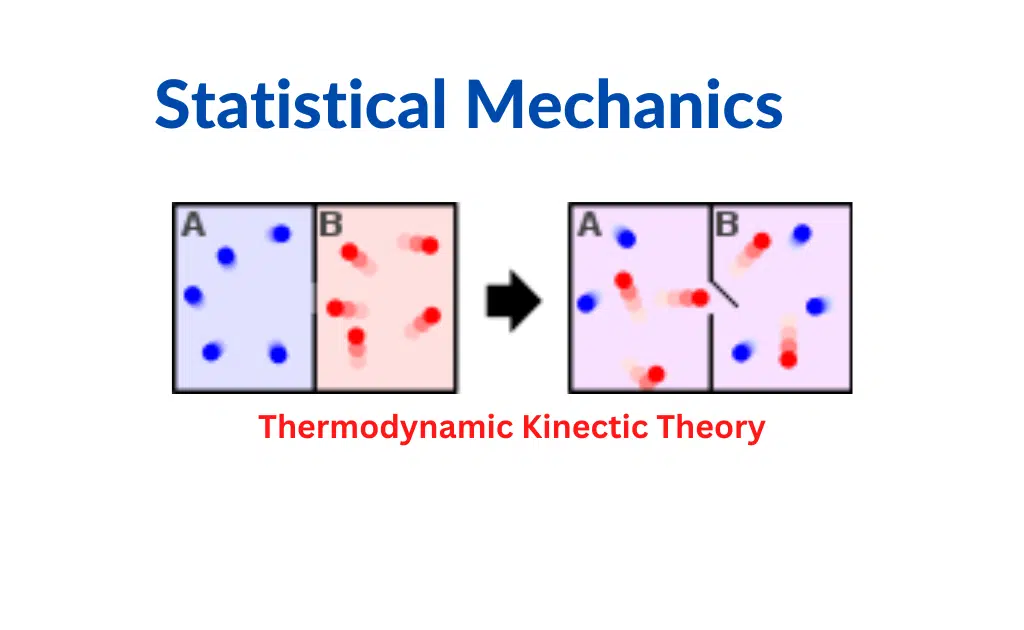Statistical Mechanics-Definition, History, And Types
Statistical mechanics is a branch of physics that uses statistical methods to explain the behavior of macroscopic systems, such as gases and liquids, by analyzing the properties and interactions of their microscopic constituents, such as atoms and molecules.
The field of statistical mechanics has played a crucial role in the development of our understanding of thermodynamics and the behavior of matter at the atomic and subatomic levels.
History of Statistical Mechanics
In the 19th century, James Clerk Maxwell and Ludwig Boltzmann made significant contributions to the field of statistical mechanics. In 1859, Maxwell formulated the Maxwell distribution of molecular velocities, the first statistical law in physics. He also argued that molecular collisions lead to the equalization of temperatures and a tendency toward equilibrium.
In 1864, Boltzmann came across Maxwell’s paper and spent much of his life developing the subject further, publishing his work in his 1896 Lectures on Gas Theory. These works laid the foundation for the statistical interpretation of thermodynamics and the behavior of gases and for modern statistical mechanics.
What is Statistical Mechanics?
Statistical mechanics is a branch of physics that uses statistical methods and probability theory to understand the behavior of large collections of microscopic entities. It aims to explain macroscopic properties, such as temperature, pressure, and heat capacity, in terms of microscopic parameters’ fluctuations and probability distributions.
The development of statistical mechanics was a crucial step in the evolution of classical thermodynamics, and it led to the establishment of the fields of statistical thermodynamics and statistical physics. Fermi-Dirac and Bose-Einstein Statistics is a common example of statistical mechanics.
Statistical Thermodynamics
Statistical thermodynamics, also known as equilibrium statistical mechanics, aims to understand the thermodynamic properties of materials in terms of the properties and interactions of their constituent particles.

It provides a link between the macroscopic properties of materials in thermodynamic equilibrium and the microscopic behaviors and movements within the material. The focus is on statistical equilibrium, which does not imply that the particles have stopped, moving, but rather that the ensemble is not changing over time.
Non-equilibrium statistical mechanics
Non-equilibrium statistical mechanics is the branch of statistical mechanics that deals with physical systems that are out of thermodynamic equilibrium. Many physical phenomena, such as heat transport, electric currents, spontaneous chemical reactions, friction, dissipation, quantum decoherence, and systems being driven by external forces, involve such non-equilibrium processes.
These processes occur over time and have characteristic rates that are important in engineering. Unlike statistical thermodynamics, which can only be used to calculate the final result after the system has reached equilibrium, non-equilibrium statistical mechanics aims to understand these processes at the microscopic level.
In principle, it can be mathematically exact, as the ensembles for an isolated system evolve over time according to deterministic equations such as Liouville’s equation or its quantum equivalent, the von Neumann equation. However, these equations are difficult to solve exactly, as they inherit much of the complexity of the underlying mechanical motion.
Non-equilibrium statistical mechanics is an active area of research, as scientists continue to explore the range of validity of additional assumptions that are necessary to model irreversible processes. The field is challenging as it needs to consider factors besides probability and reversible mechanics to make progress in understanding non-equilibrium systems.
Related FAQs
What is statistical mechanics used for?
Statistical mechanics is used to predict the collective properties and behaviors of large numbers of particles.
What is an example of statistical mechanics?
The Maxwell-Boltzmann distribution is an example of a statistical mechanics model used to describe particle speeds in a gas.
What is the basic concept of statistical mechanics?
The basic concept is to use probability and statistics to predict the properties of systems with many particles.
What are the different types of statistical mechanics?
Some types are equilibrium statistical mechanics, non-equilibrium statistical mechanics, quantum statistical mechanics, and classical statistical mechanics.



Leave a Reply